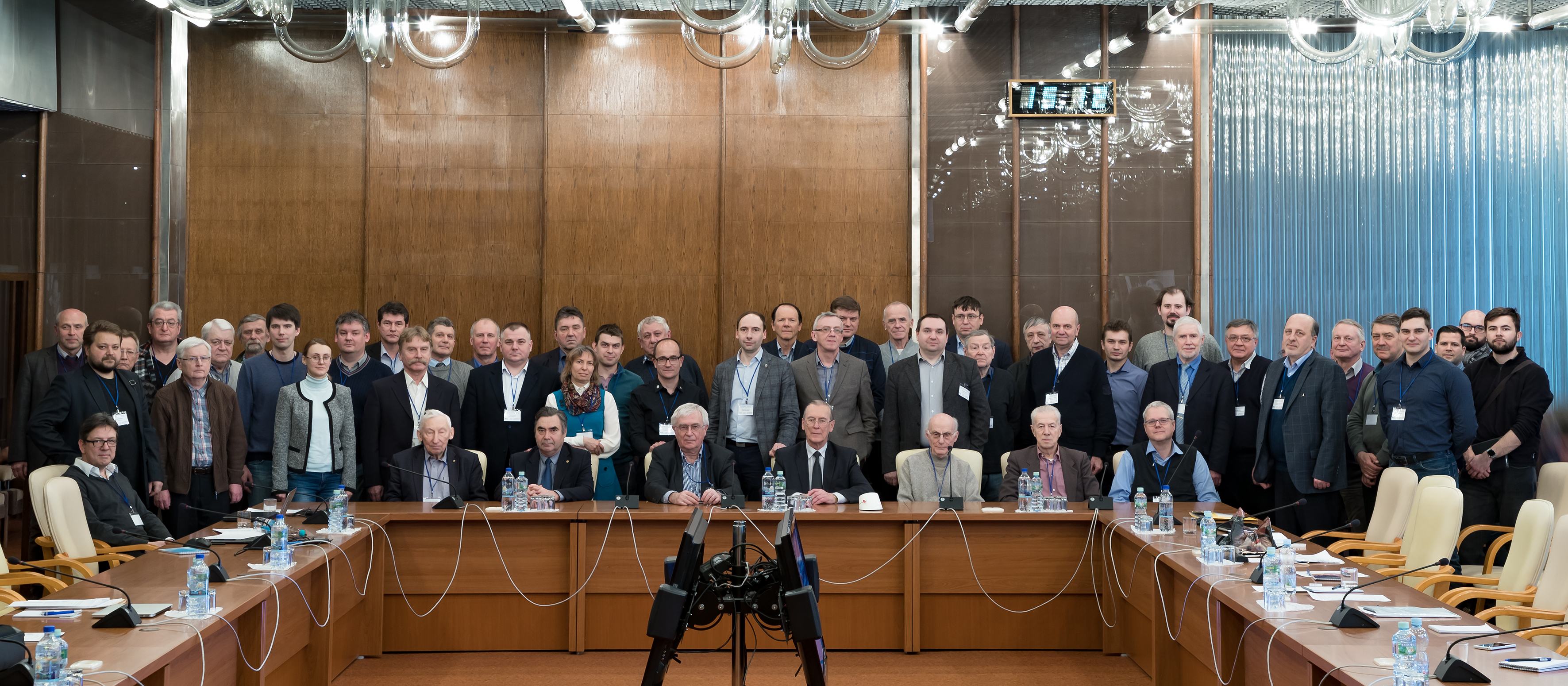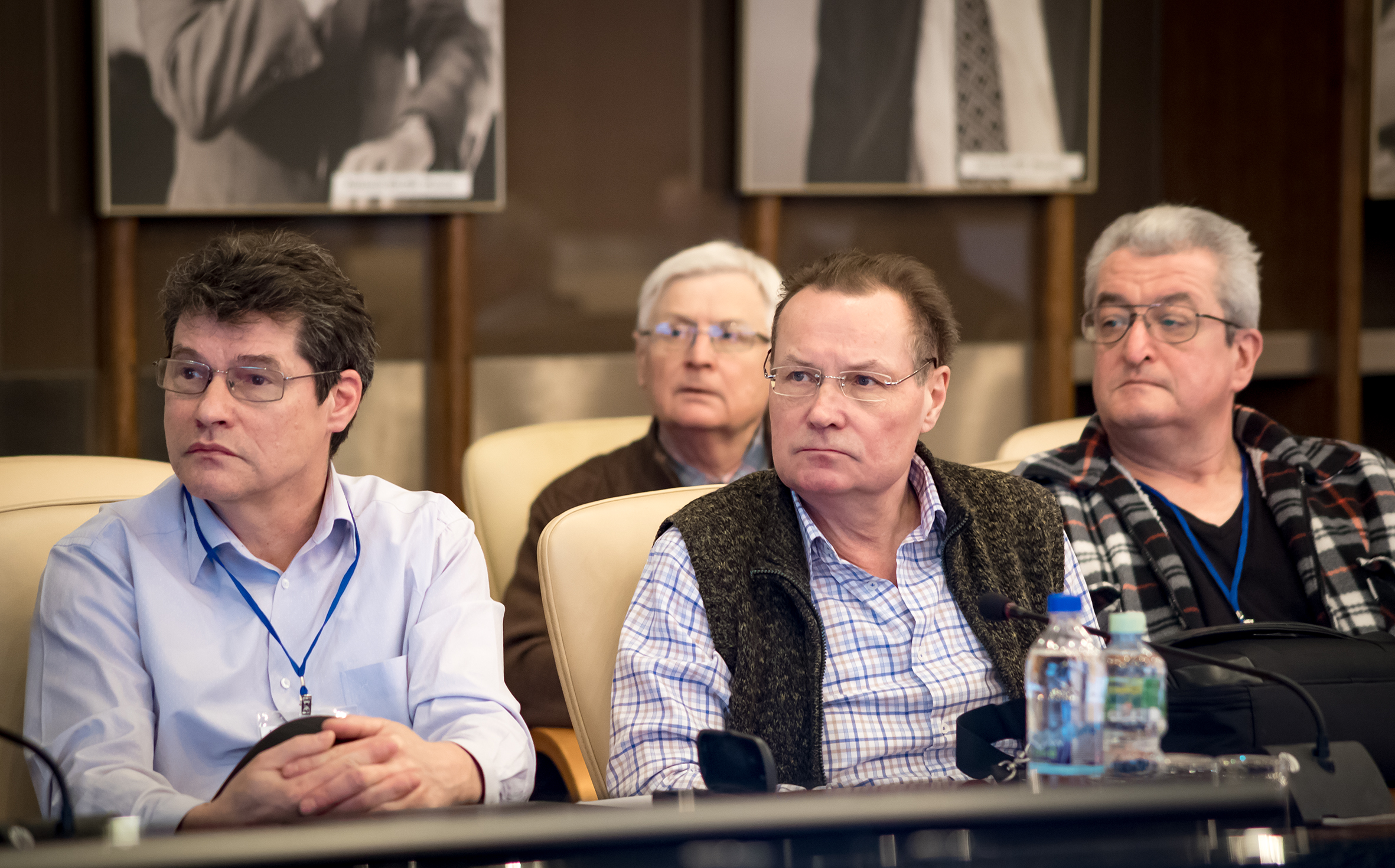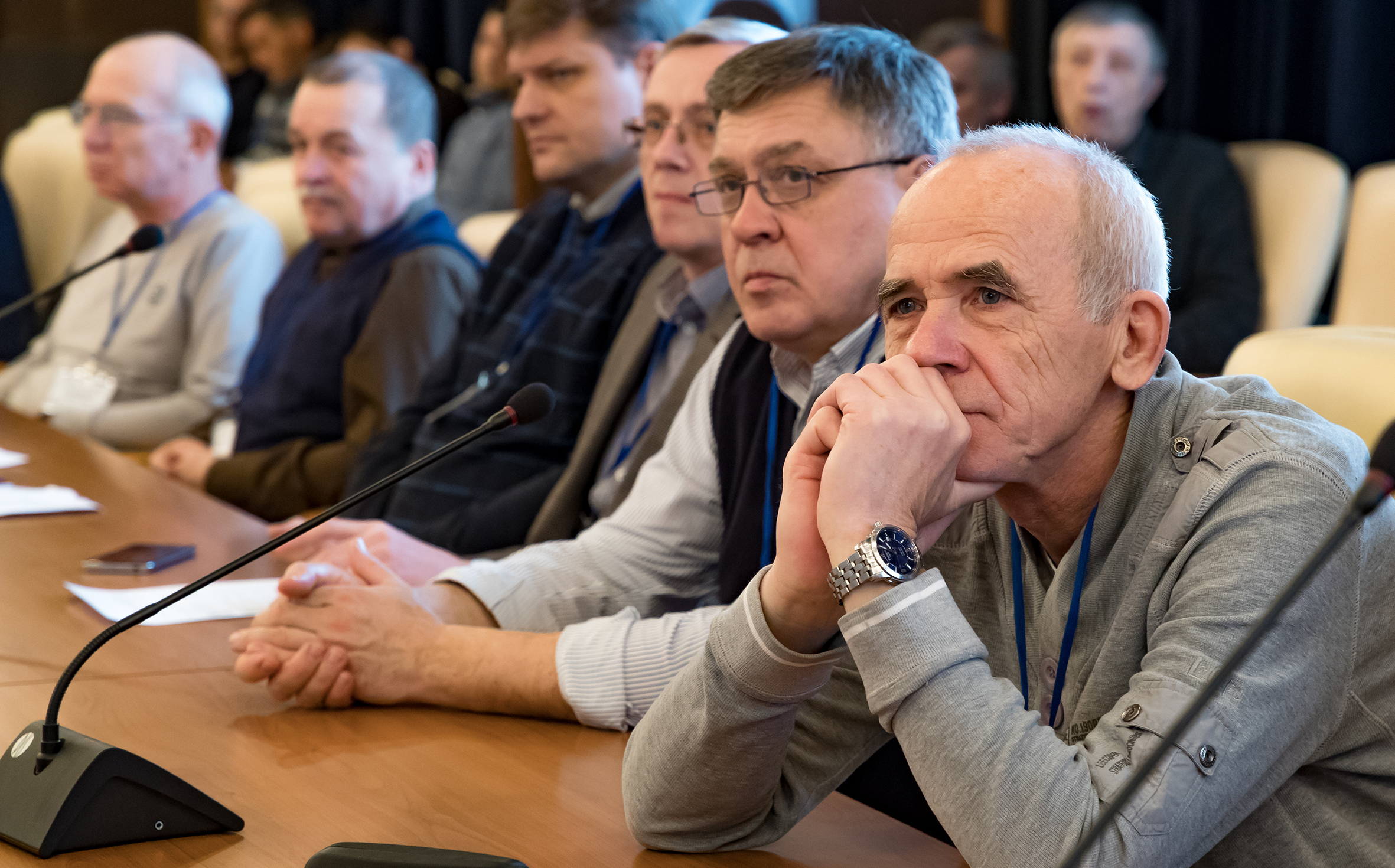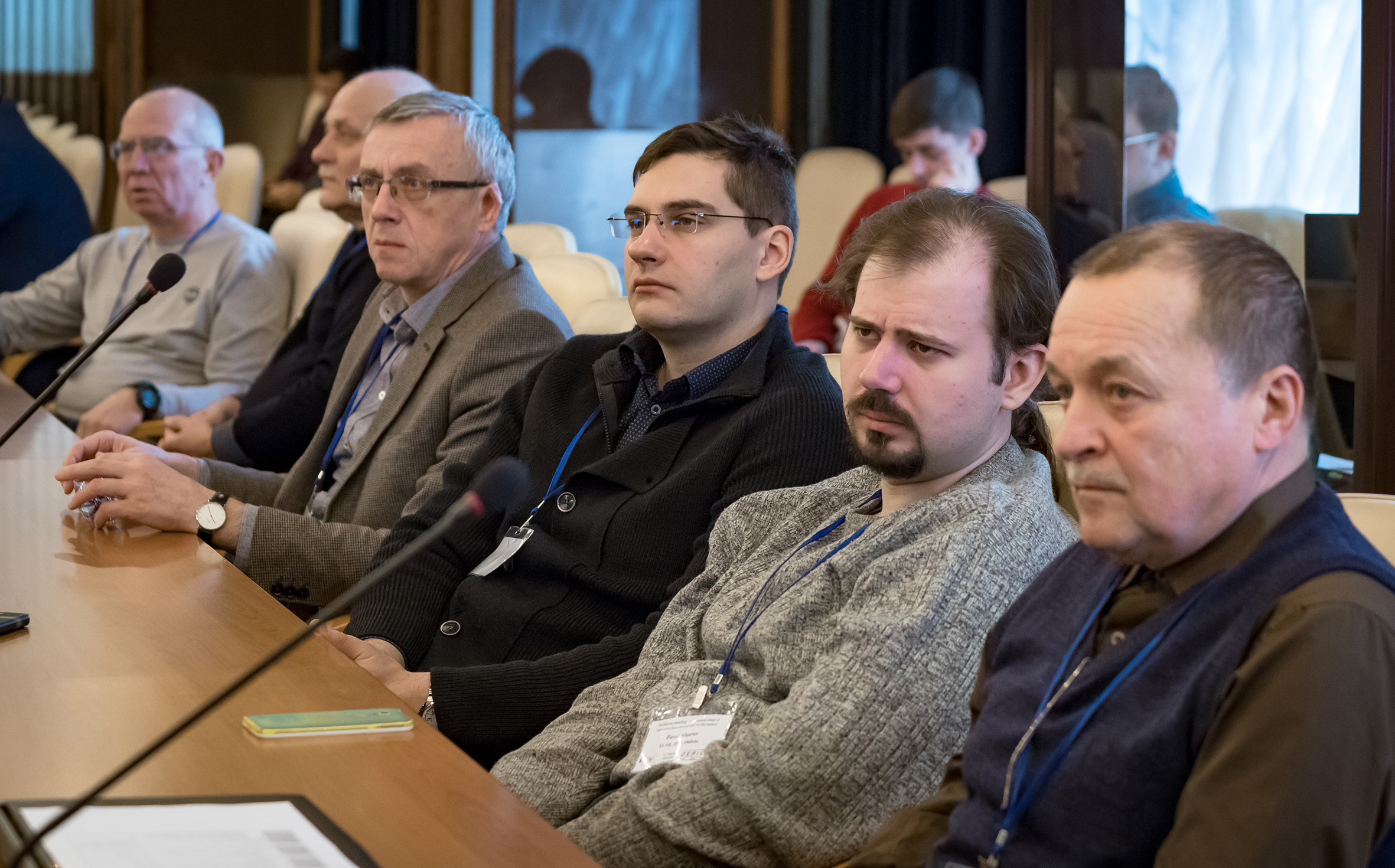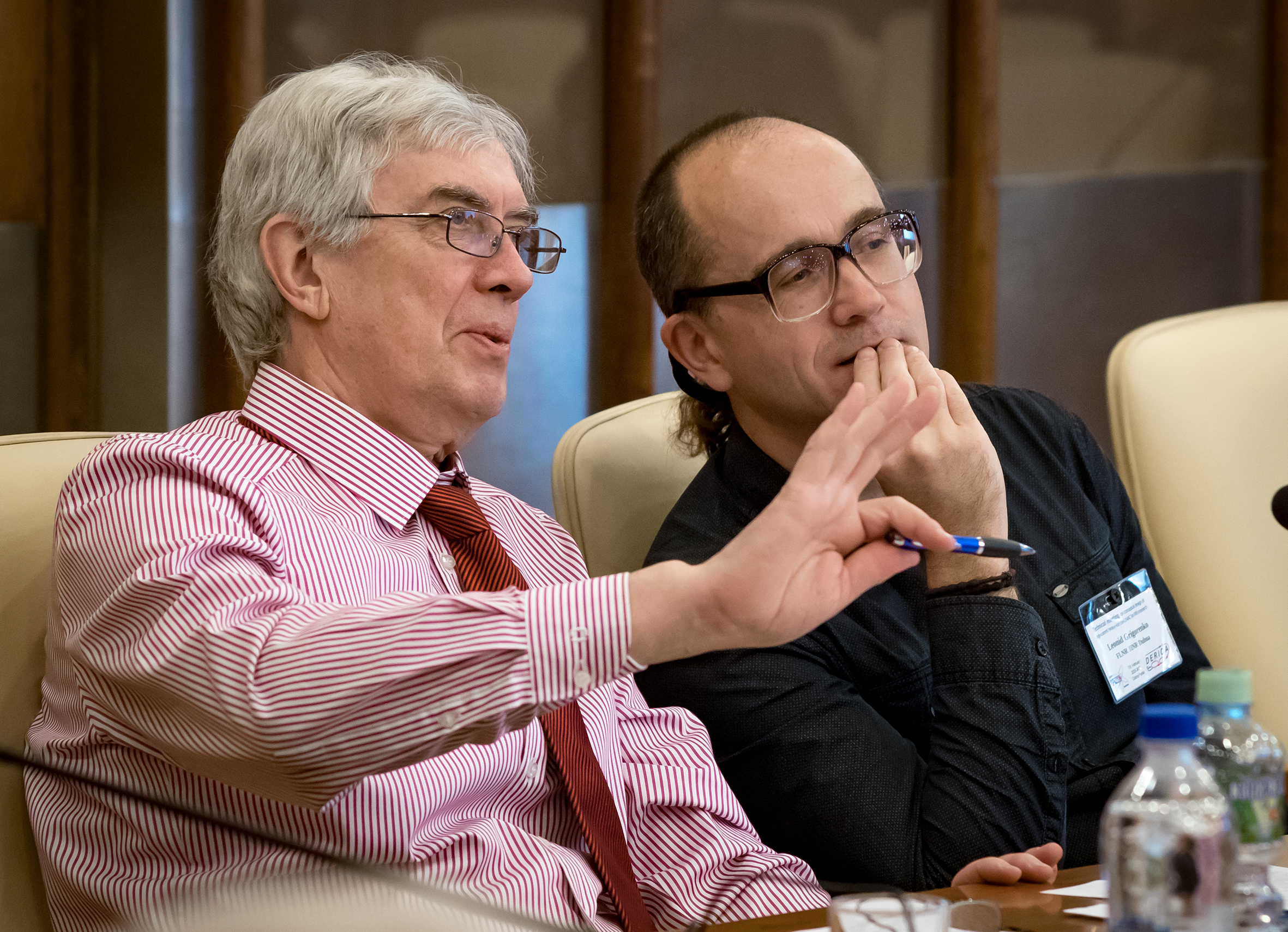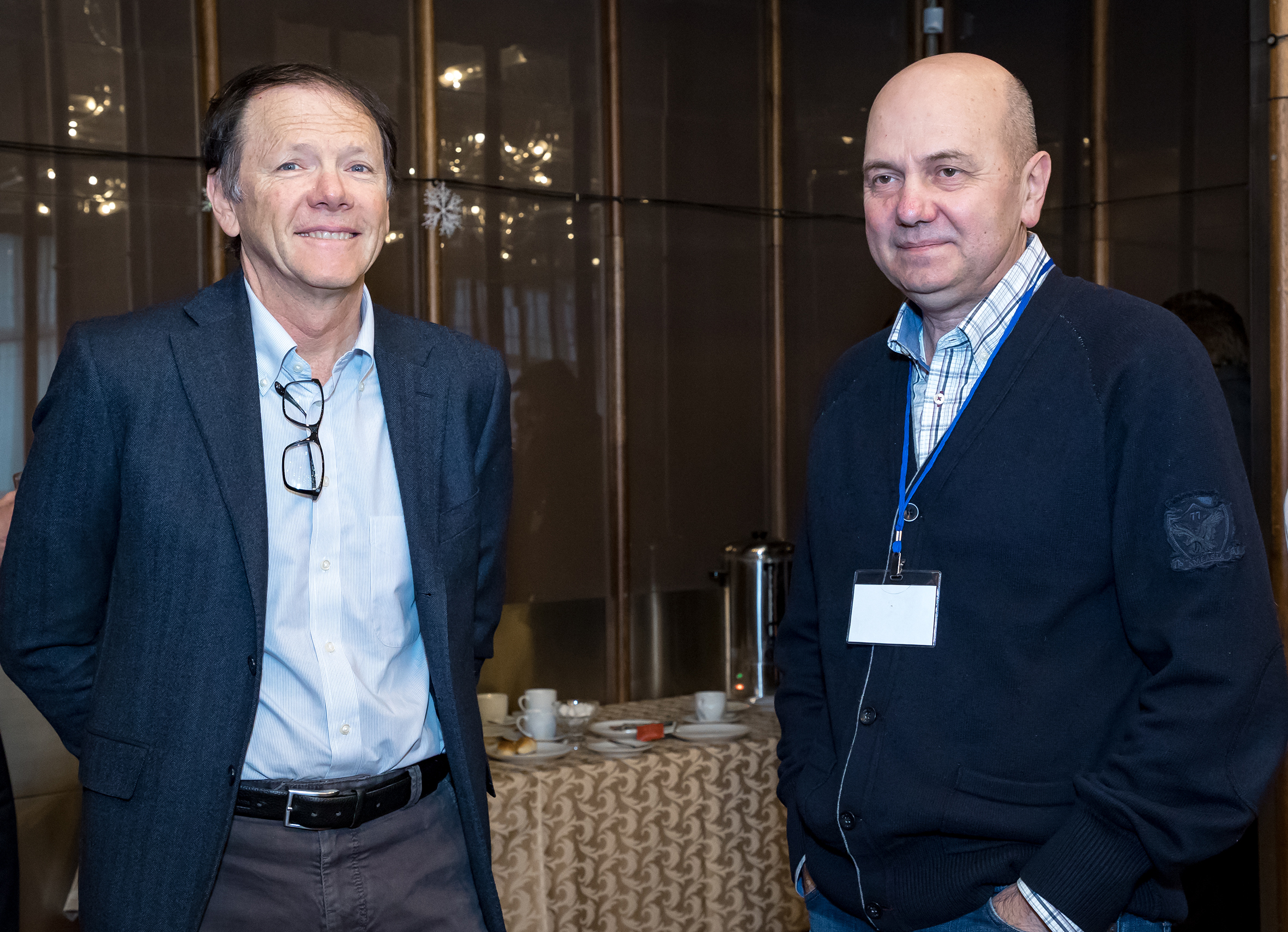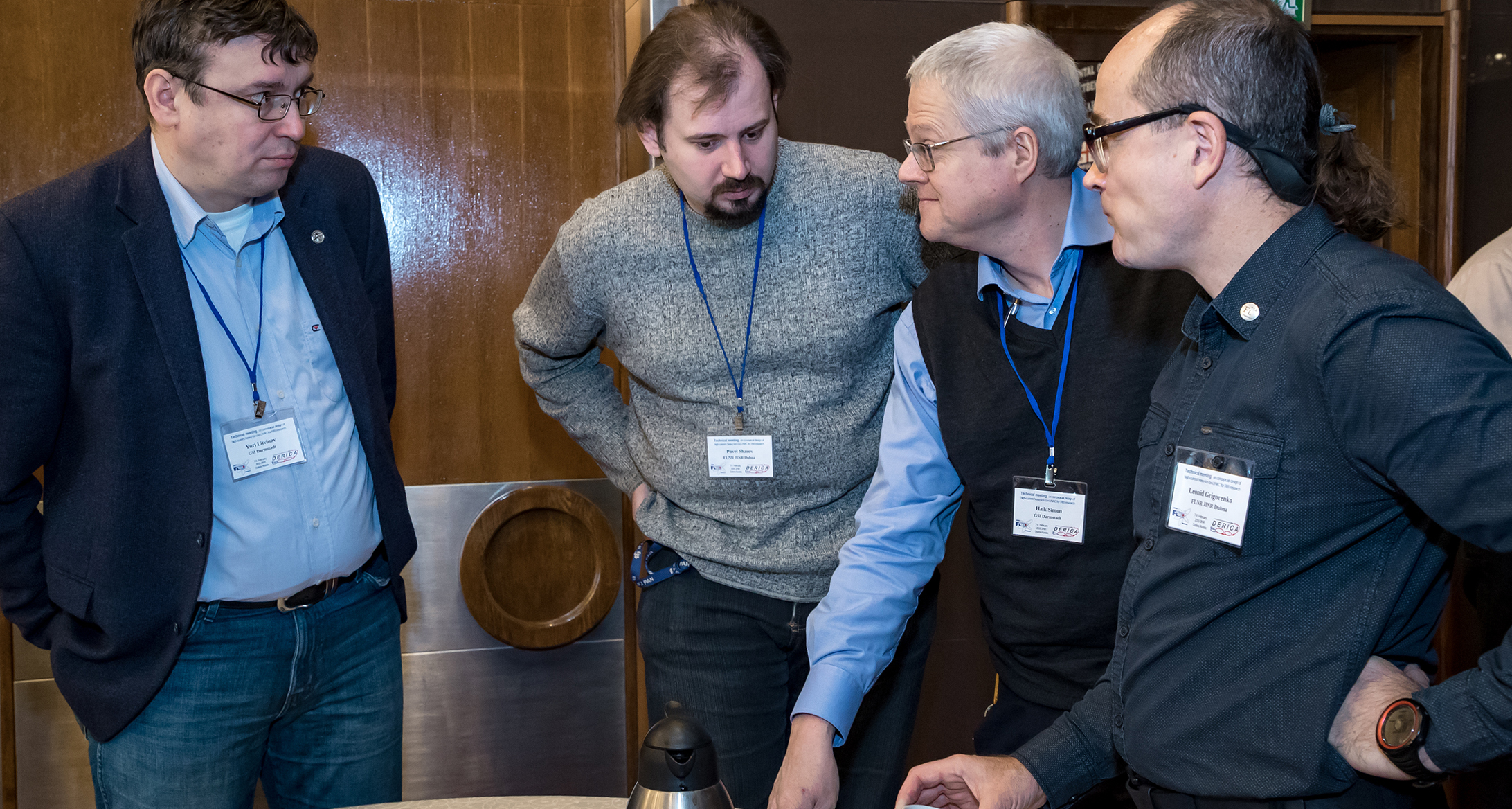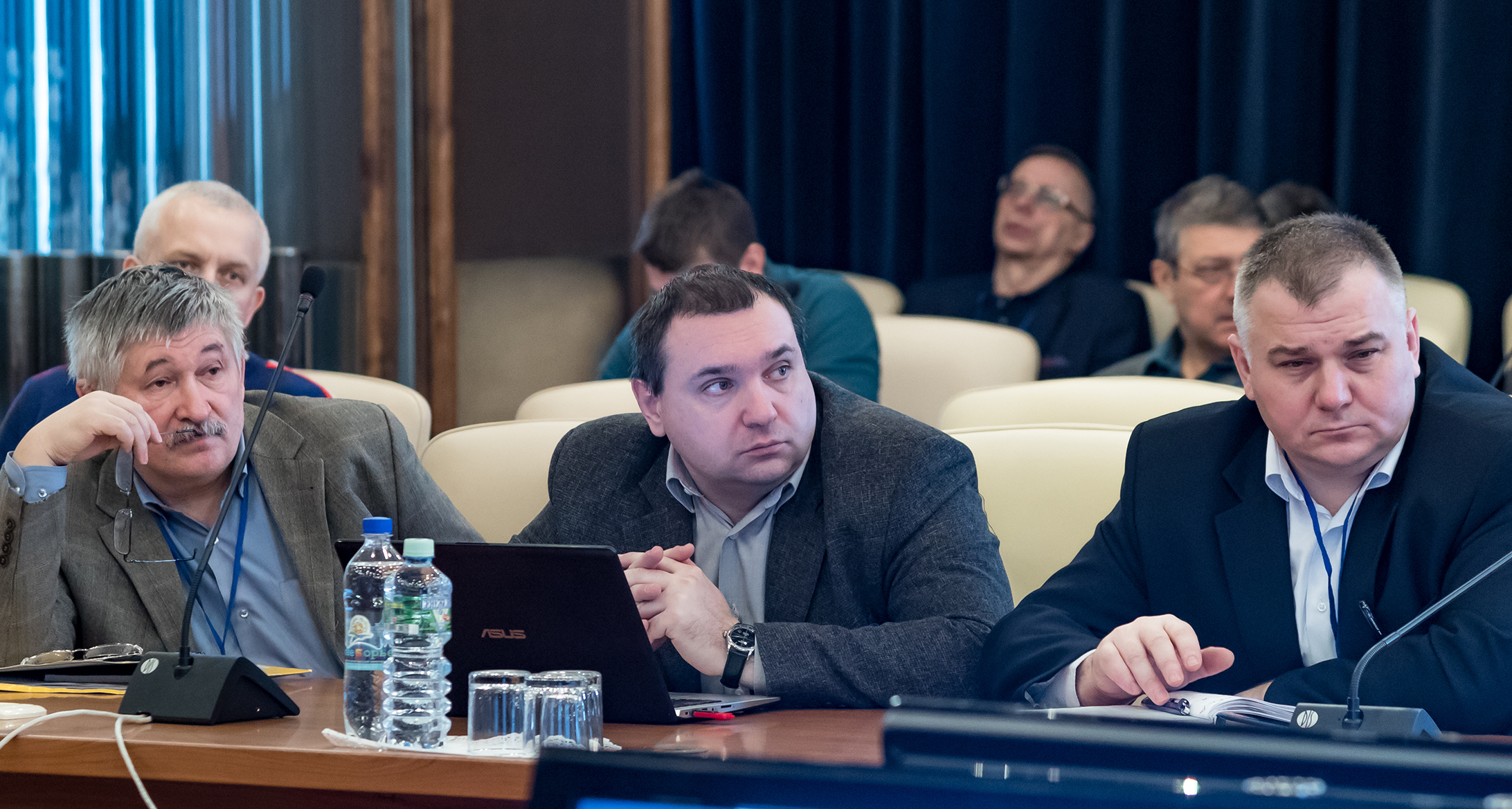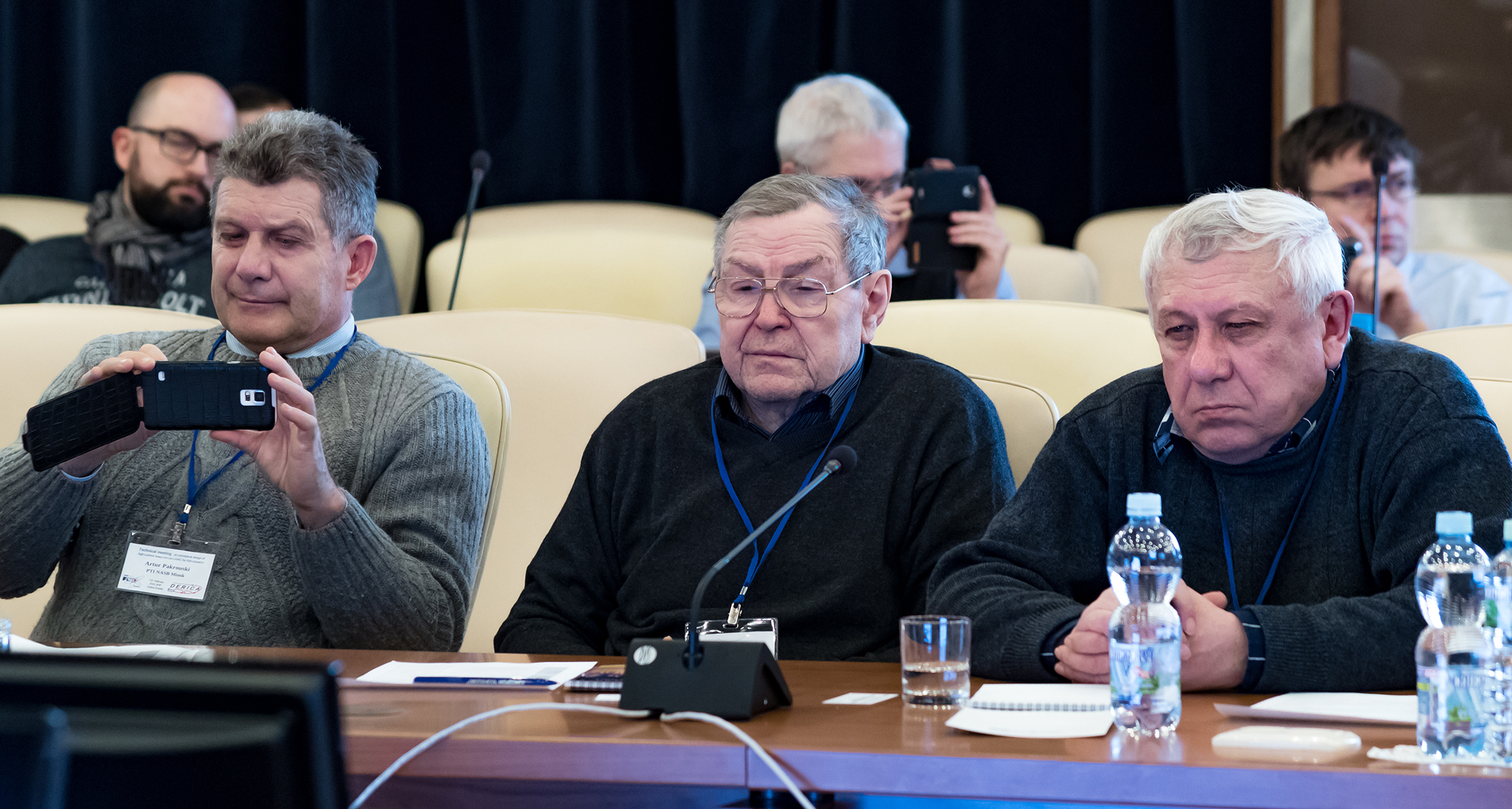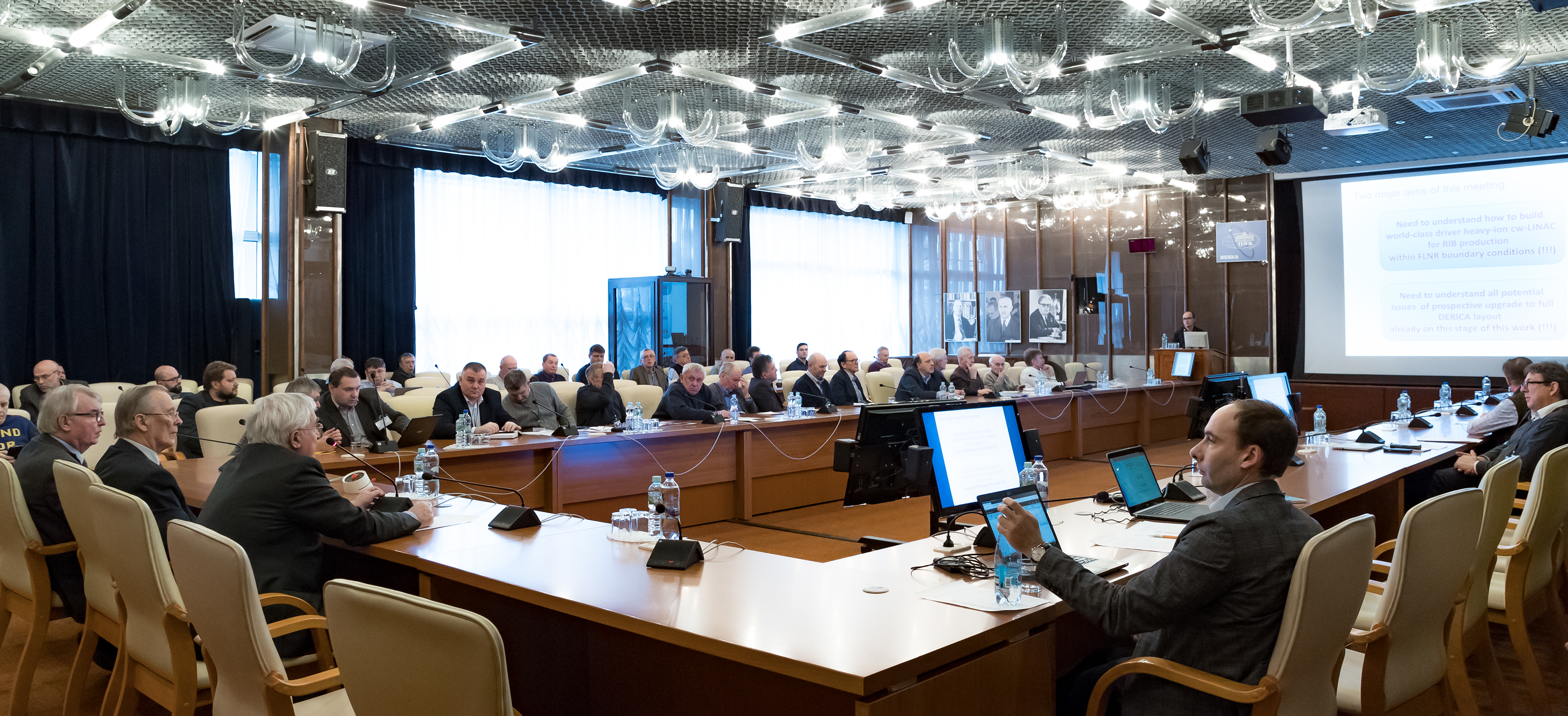Prospects for study of exotic nuclei
News, 12 February 2019
The research programme of superheavy elements in the Flerov Laboratory of Nuclear Reactions JINR is rightly world known. Success in the study of light exotic nuclei allows expecting the implementation of the world-level research programme of properties of exotic nuclei in understudied areas of the chart of nuclides.
The first Workshop with participation of leading national and foreign specialists that was devoted to prospects for research of properties of exotic neutron and proton excessive nuclei in wide but understudied areas of the chart of nuclides was held in the International Conference Hall on 7 – 8 February 2019 and coincided with the celebration of the Day of Russian Science. That week turned out to be very intensive to the staff of the Flerov Laboratory of Nuclear Reactions as far as simultaneously with this Workshop, the RAS Presidium and the Government of the Moscow Region held events dedicated to the anniversary of the birth of D.I. Mendeleev and the opening of the International Year of the Periodic Table in Russia.
The Workshop, which gathered 60 participants from institutes of Russia, Belarus, Italy, Germany and Canada, was opened by JINR Director Academician V.A. Matveev. S.N. Dmitriev, L.V. Grigorenko and G.M. Ter-Akopian in their reports spoke about the present state of the FLNR basic facilities applied in research of light exotic nuclei (the U-400M accelerator, the ACCULINNA-2 separator with the peripheral equipment and radiation protection) as well as made proposals on the advanced research programmme. Participants appreciated the idea to focus the programme on the fields of nuclear physics with considerable potential for discoveries. This will allow being at the front edge of scientific research among leading world centres with the optimal budget. In the way of examples, research at the beams of radioactive nuclei with their interaction with electrons in the collider experiments was mentioned as well as the study of properties of heavy neutron-excessive systems in the Z area 100-108 produced in reactions of cluster transfer 4n, 5H, 6-8He, 9-11Li, 14-16Be, … 24O and others to nuclei of transuranium elements.
To achieve ambitious scientific aims, development of the Factory of radioactive beams is necessary, compared in its significance with the Factory of superheavy elements in FLNR JINR. Creation of the high-current accelerator of heavy ions is considered as the starting and key element of the new project. This accelerator is supposed to achieve record intensities for the 3rd order intermediate (Ca, Kr) ions and heavy (Bi, U) ions – 1 emA at relatively low beam energies (about 40 MeV/nucleon for Ca ions and about 100 MeV/nucleon for U ions). Leading specialists in the fields of design and operation of high-current linear accelerators of heavy ions shared their ideas on this issue. Thus, Alberto Facco (INFN, Legnaro, Italy) in his report mentioned 12 various issues that should be examined and for which a compromise solution for the design of such an accelerator should be found. The audience heard with interest the report by V. Barth and S. Yaramyshev on a long-year experience in GSI (Darmstadt, Germany) obtained during development and operation of the superconducting linear accelerator operating non-stop. Russian specialists T.V. Kulevoy (NRC “Kurchatov Institute” – ITEP) and S.M. Polozov (MEPhI) presented preliminary results of calculations of accelerating dynamics of heavy ions and first view on major parameters of the LINAC-100 linear accelerator that fits demands of physicists. Possibilities of the production of elements for linear accelerators in the Republic of Belarus (PhTI, Minsk) in the frames of joint scientific programmes of the Union State and the RF (VNIITF, Snezhinsk) as well as experience acquired in the NICA project implementation were introduced to participants of the Workshop. In a brief report by the author of these lines, comments were made on the draft recommendations of experts submitted to the JINR PAC for Nuclear Physics with a view to including this work in the JINR Topical Plan.
On 8 February, on the Day of Russian Science, the Workshop was held chaired by JINR Vice-Director B.Yu. Sharkov and with active participation of RAS Corresponding Members L.V. Grigorenko and I.N. Meshkov. A.A. Efremov, A.M. Rodin (FLNR) and H. Simon (GSI) presented their reports on the experience in developing ion sources, gas cells for decelerating ions in gas and their further extraction and wide-aperture separators of radioactive nuclei. V. Zvyagintsev (TRIUMF, Canada), Yu. Litvinov (GSI), P.Yu. Shatunov (INR SB RAS, Novosibirsk) and H. Simon reported on the issues of post-accelerating of radioactive beams, understudied fields of nuclear and atomic physics discovered in work with the storage ring, experience of designing storage rings for heavy ions and electrons in the frames of the ELISe@FAIR project as well as achieved luminousity in experiments on electron-ion collisions and obtained scientific information about properties of exotic nuclei.
The Workshop was concluded by a vivid discussion in the round table format aimed to finalize the plan for future work and sum up the milestones of the event. Professor A.A. Kolomiets (NRC “Kurchatov Institute – ITEP) and V.V. Paramonov (INR RAS) gave their expert opinion on the creation of the high-current linear accelerator. Participants of the Workshop proposed some amendments to introduce into the draft of the document “Expert recommendations” among which there was the following: “to grant the joint institute status to the project that unites interests of several laboratories, namely FLNR, FLNP and VBLHEP”.
Andrei Fomichev, FLNR
